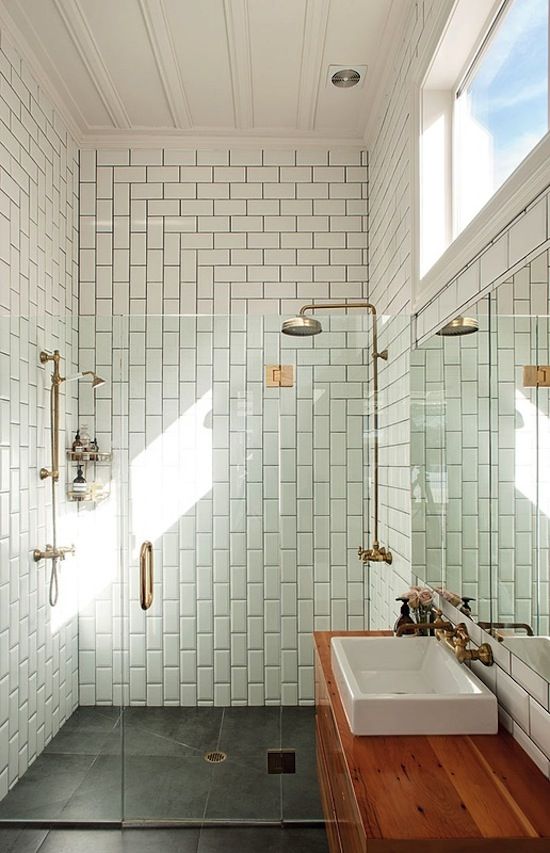What Are The Various Types Of The Floor Tiles, Their Unique Benefits?
Floor tiles are one of the most popular and versatile materials used in DIY projects. Whether it’s a kitchen, bathroom or bedroom floor – they can be used to create a whole range of designs and styles.
A floor tile is usually rectangular with edges that are straight lines. The size of the sheet depends on the intended use but generally a standard size would be 20-30cm x 30-40cm (8″ x 12″) and they come supplied as 4mm thick pieces which are then cut into individual squares.
There are two main types of floor tile; traditional and interlock. They have different properties and therefore suit different applications. Here we’ll look at what each type is made from, how they’re laid, their installation requirements, and the benefits and drawbacks of each.
No matter which kind of the floor tile a person selects they will have the option of 1/8 vs 1/16 grout line subway tile. A person can do the complete research and select the option that will give good results. The main motive of the people is to reach the goals that will give good results. the main motive of the people is to reach the goals.

Traditional Floor Tile
Traditional floor tiles are square or rectangular shaped tiles. They’re available in a variety of colours and patterns. A common application for them is to cover an entire room area, such as a kitchen or hallway, with one solid colour. They’re also commonly used when tiling around walls or windows because they don’t show up any imperfections like gaps between bricks.
The downside of using traditional floor tiles is that there’s no way to change the pattern once they’ve been laid down unless you want to start again, which is why they’re not suitable for large areas such as kitchens and bathrooms where you might want to swap the design halfway through the job.
They’re easy to install but require some skill to lay out properly. In most cases, the installer will need to mark out the area first so that the tiles fit together perfectly. If the tiles are too loose, they can shift around during the laying process which could cause problems further down the line.
If you do decide to go this route, make sure the person doing the installation has the right tools to ensure a good finish. Make sure your contractor uses waterproof glue to keep everything together, especially if the floor is going to get wet, and that they’re wearing protective gear including gloves and a face mask to prevent getting splashed by the water.
Interlocking Floor Tile
Interlocking floor tiles are very similar to traditional ones in that they’re made from small squares of plastic. They’re also usually rectangular in shape and sold in packs of several hundred. Unlike traditional tiles, however, interlocking ones have ‘keyholes’ on the side. These allow the tiles to lock together without having to be glued together, making the job easier and much quicker.
The keyhole design allows the tiles to slot neatly together and prevents shifting as well as creating a uniform finish. Because they’re locked together, you can easily remove or replace individual tiles if they get damaged or worn. Interlocking tiles are best suited for smaller areas such as hallways, bedrooms and living rooms.
Installation is quick and straightforward. Just snap them together and you’re done! You’ll only need to fill in the empty spaces between tiles with grout to give them a smooth finish.
Although easy to use, interlocking tiles are quite expensive. Each pack of 300 tiles costs $2.50 compared to $0.10 per square centimetre for traditional tiles. However, given the ease of installation and the fact that you can swap out individual tiles, you may find that they’re worth the extra expense.
Benefits Of Both Types
Both traditional and interlocking floor tiles can provide a great finish to a project, although traditional ones are better suited to larger areas. The main advantage of interlocking tiles over traditional ones is that they save time – you won’t need to wait for the glue to dry before moving on to the next step.

While traditional tiles come in a variety of shapes and sizes, interlocking tiles come in a limited selection of shapes and sizes. This means that installing them isn’t as difficult as it would be with traditional tiles and can be done by anyone who knows how to use a screwdriver. Once installed, they’re virtually impossible to move, even by someone with the strength of Hercules.
Downside To Using Either Type?
While both traditional and interlocking floor tiles are widely used across the home, each comes with its own set of advantages and disadvantages. Traditional floor tiles are easier to install than interlocking ones, but can be more expensive.
However, interlocking tiles are cheaper than traditional ones and are ideal if you plan to do minor repairs, but are less durable. Interlocking tiles are designed to be replaced rather than repaired, meaning that if something happens to the keyhole, the tiles will fall apart instead of staying put.
Another issue with interlocking tiles is that they can take longer to install than traditional tiles. If you’re planning on installing them yourself, you should have enough time to work out how many tiles will be needed to complete the task. It takes a lot of practice to get it right, though, so you shouldn’t attempt installing them if you aren’t confident.
In short, both traditional and interlocking floor tiles have pros and cons, so it all really depends on your needs. If you’re looking to install an entire room, you’ll probably prefer to stick with traditional tiles. But if you’re hoping to update a part of your home quickly, interlocking tiles may be the answer.

